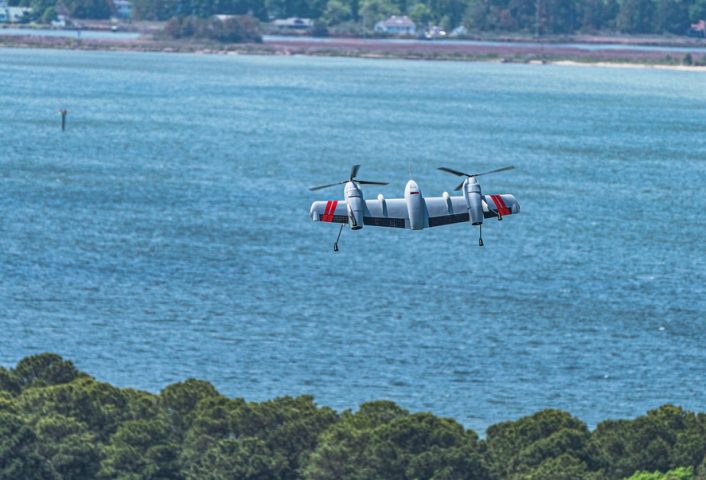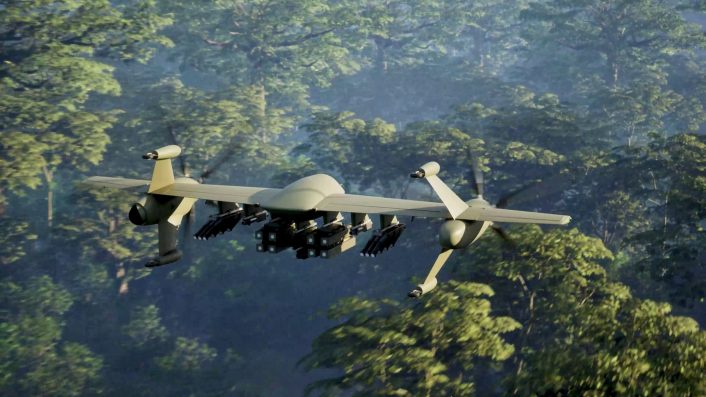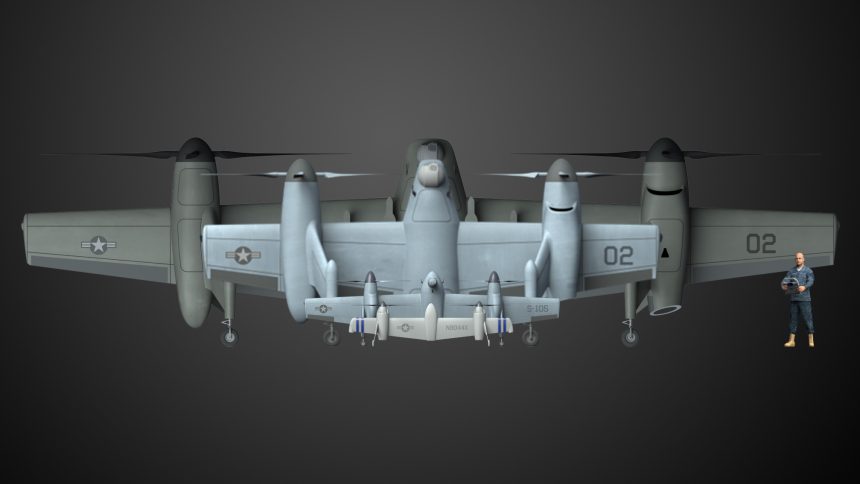The Nomad family of drones will be based off the novel rotor blown wing VTOL UAS which Sikorsky has been developing and testing.
Sikorsky has announced a new family of long-endurance, runway-independent drones, called Nomad, designed for reconnaissance, light attack, contested logistics and more. The new system will be based off the novel rotor blown wing vertical take-off and landing (VTOL) Uncrewed Aerial System (UAS) which Sikorsky has been developing for over a year.
As we previously reported here at The Aviationist, Sikorsky announced it proved the design in March 2025. By flying in both the helicopter and airplane flight modes, the company said it validated the advanced control laws used to fly the unmanned aircraft, which takes off vertically like a helicopter and then tilts the entire airframe to put the wings level and fly like a fixed wing aircraft.
Nomad
As part of the announcement, Sikorsky said the previously unnamed prototype is the Nomad 50, with a 10.3 ft wingspan. The company is now building the Nomad 100, which has been described as a Group 3, 18 ft wingspan variant of the prototype, with first flight expected in the coming months.

“We use the term ‘family’ to point to a key attribute of the design; its ability to be scaled in size from a small Group 3 UAS to the footprint equivalent of a Black Hawk helicopter,” said Rich Benton, Sikorsky vice president and general manager. “The resulting Nomad family of drones will be adaptable, go-anywhere, runway independent aircraft capable of land and sea-based missions across defense, national security, forestry and civilian organizations. Nomads are a force multiplier, complementing the missions of aircraft such as the Black Hawk to retain the strategic advantage in the Indo-Pacific and across broader regions.”
In the press release, Sikorsky specifically mentioned that the Nomad family can be scaled from a Group 3 UAS (56 pounds to 1,320 pounds) to Group 4/5 (1,320 pounds and up). The drones predominantly use fuel-efficient hybrid-electric propulsion, while future larger variants will feature a conventional drivetrain.
Sikorsky highlights that the twin proprotor design combines the versatility of a helicopter with the speed and range of a fixed-wing airplane. In fact, a Nomad aircraft can take off, hover, and land vertically, plus cruise on the wing for extended periods, gaining access to confined spaces while still retaining the cruise performance of a fixed wing aircraft.
Furthermore, as mentioned by the company when it validated the prototype, Nomads are operated via Sikorsky’s MATRIX autonomy technology. The company has already demonstrated MATRIX across a range of applications, including aerial firefighting, logistics resupply, and advanced aerial mobility, and says it will allow seamless integration of Nomad with rotary and fixed-wing aircraft.
“Nomad represents new breakthroughs for Sikorsky and the next generation of autonomous, long-endurance drones,” said Dan Shidler, director of Advanced Programs. “We are acting on feedback from the Pentagon, adopting a rapid approach and creating a family of drones that can take off and land virtually anywhere and execute the mission – all autonomously and in the hands of Soldiers, Marines, Sailors and Airmen.”
Work in Progress
According to the reports by Aviation Week and Breaking Defense, Sikorsky is already in the beginning stages of developing a Group 4 Nomad, along with ongoing discussions with possible customers. These were not mentioned, but they are likely to be part of the U.S. military, which could use such platform to operate from austere locations in the Indo-Pacific.

“Group 4 is really on our drawing boards [in the] preliminary design review. We are discussing it with a couple of customers. There is no contract,” said Igor Cherepinsky, the director of Sikorsky Innovations. “We’re going to go build one [and] demonstrate it anyway, sometime within a year.”
Erskine “Ramsey” Bentley, Director of Strategy and Business Development for Sikorsky Advanced Programs further detailed the target markets for the Nomad family. According to Bentley, the Group 3 Nomad is aimed at the brigade-level reconnaissance mission which the U.S. Army performed with the RQ-7 Shadow, while the Group 4 variant is aimed at the division/corps-level mission of MQ-1C Grey Eagle.
“We see these aircraft as being multi-role, but also multi-service, and we also see civilian applications, or commercial applications for these aircraft also being vertical takeoff and landing. They would be ideal for shipboard operations with the Navy or the Marine Corps,” Bentley said. “We could use these for spotting wildfires, for wildfire suppression operations, or they could be used for humanitarian assistance operations.”









